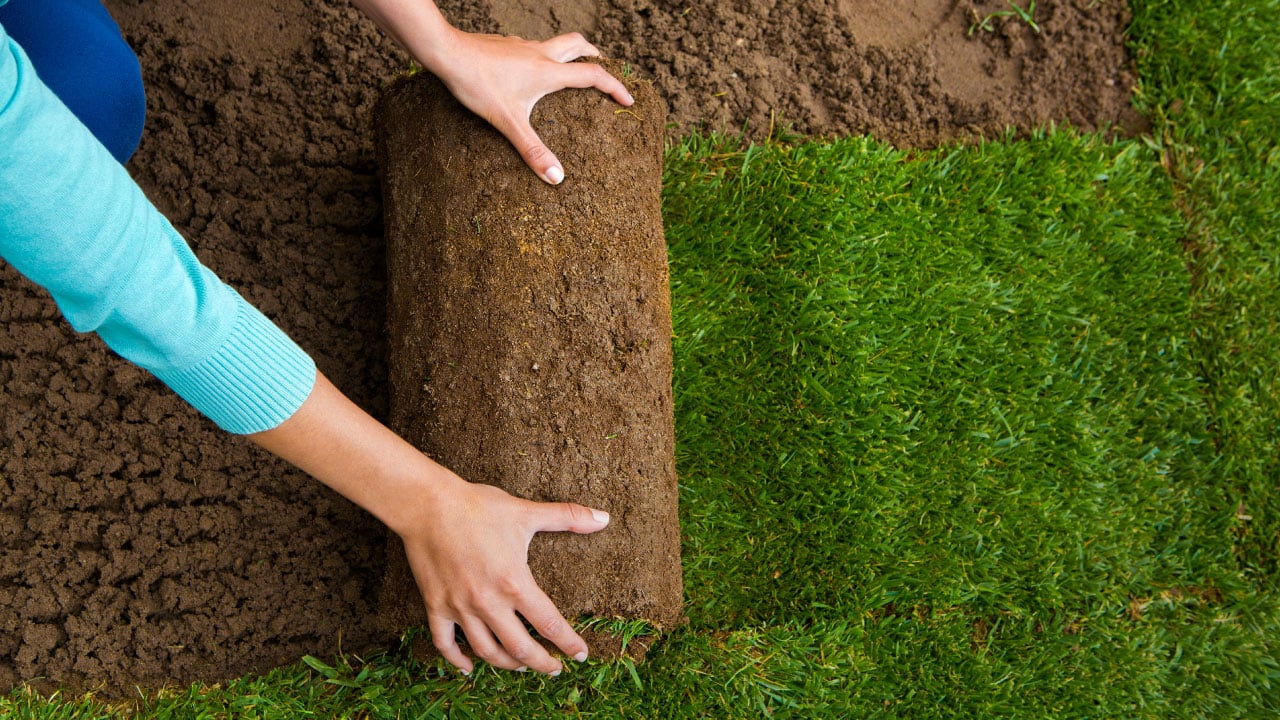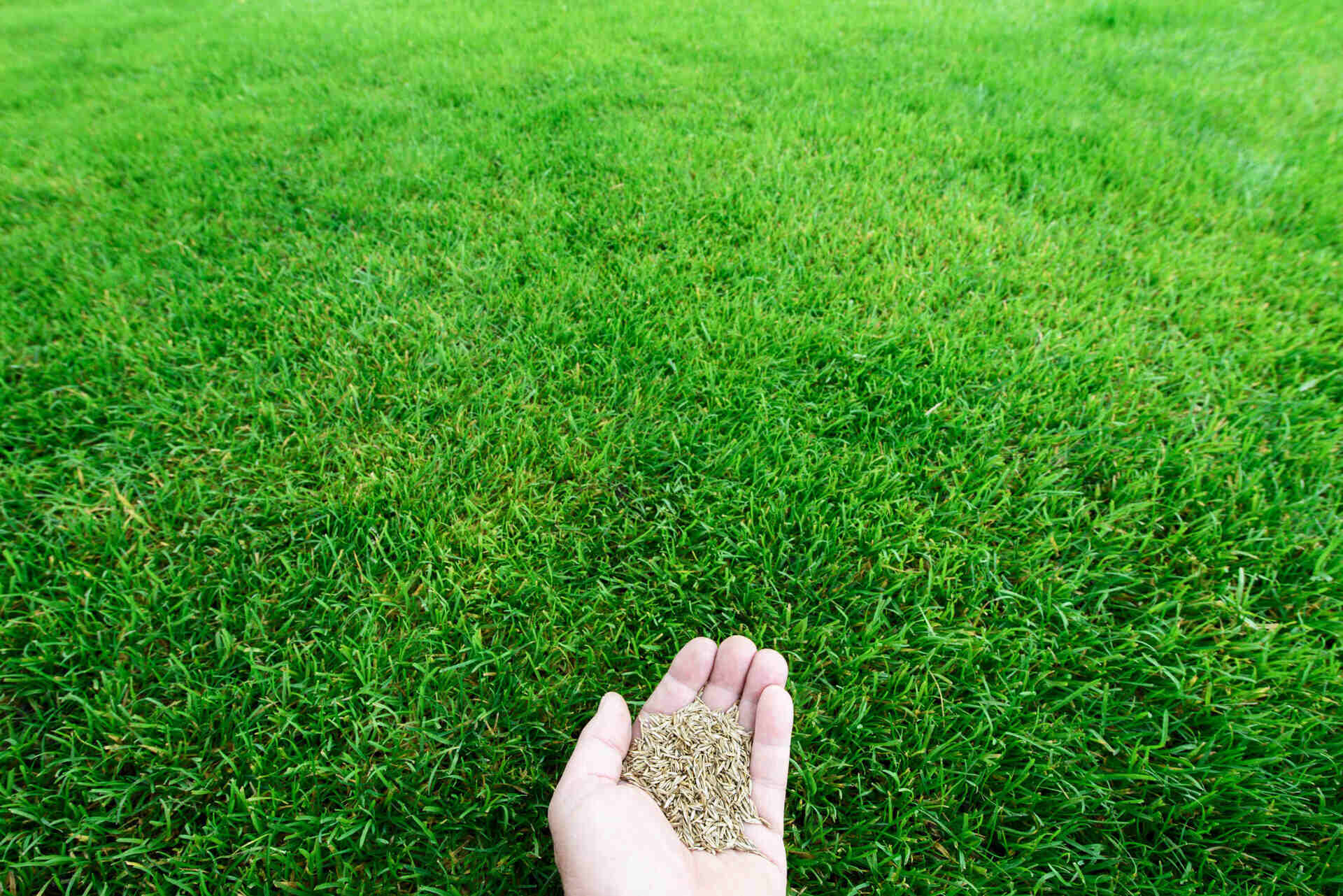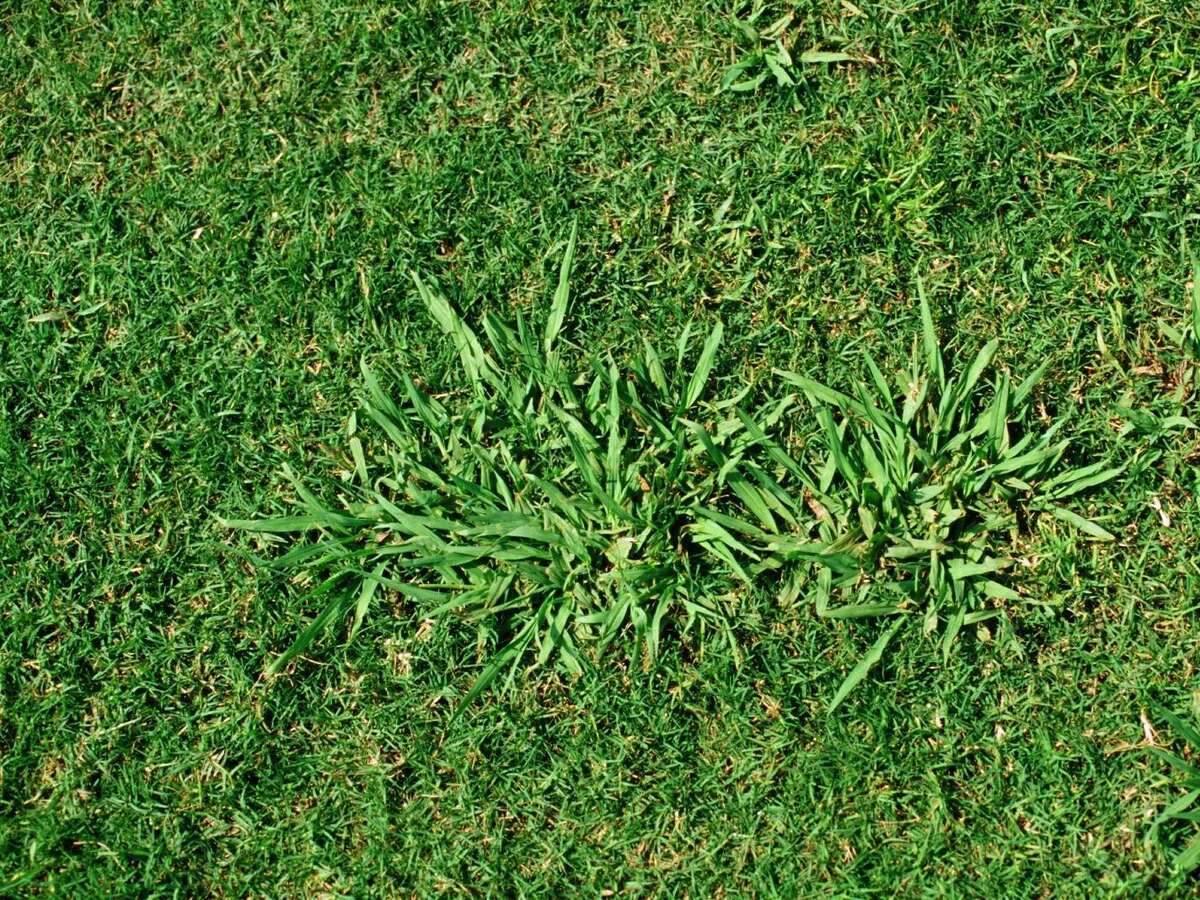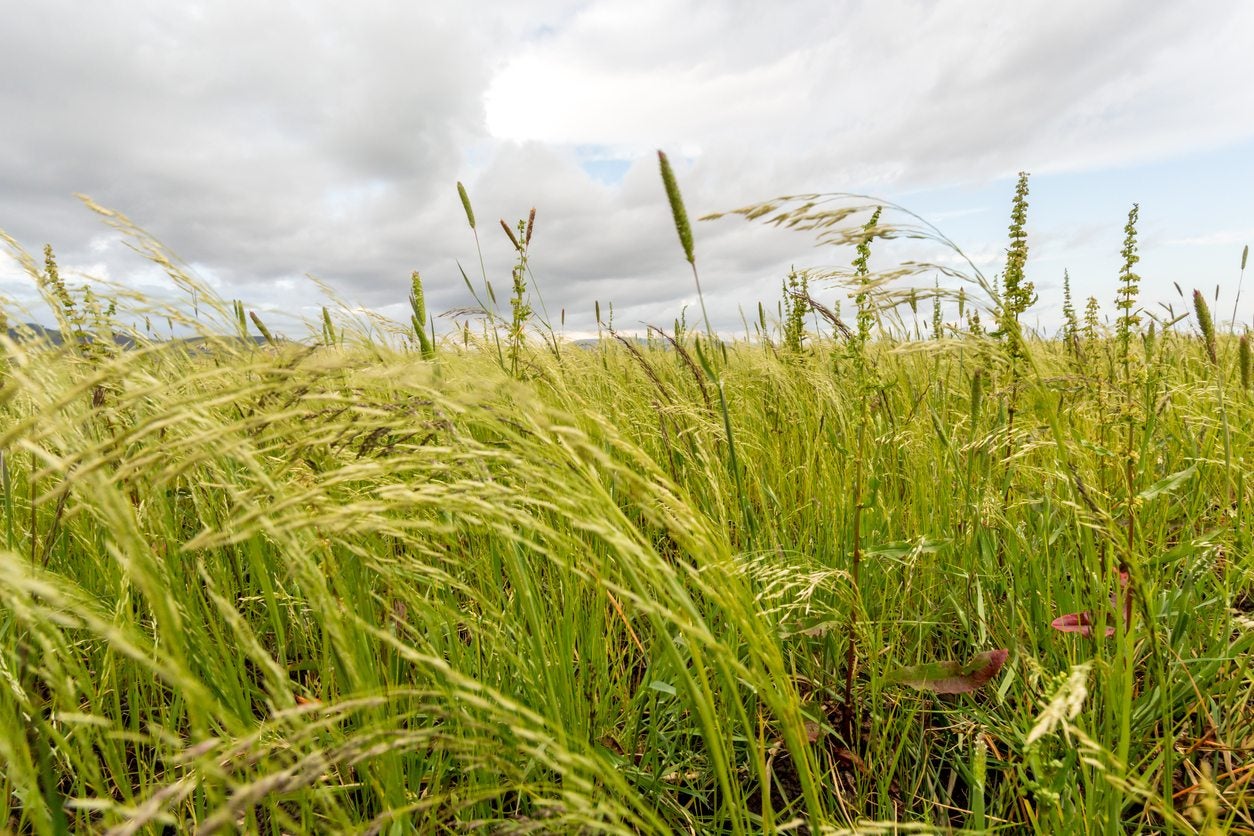Home>Gardening & Outdoor>Landscaping Ideas>When To Plant Grass In Colorado


Landscaping Ideas
When To Plant Grass In Colorado
Modified: October 18, 2024
Discover the best time to plant grass in Colorado with expert landscaping ideas. Get a lush, thriving lawn with our essential tips and advice.
(Many of the links in this article redirect to a specific reviewed product. Your purchase of these products through affiliate links helps to generate commission for Storables.com, at no extra cost. Learn more)
Introduction
Understanding the Best Time to Plant Grass in Colorado
Landscaping in Colorado offers a unique set of challenges and opportunities. The state's diverse climate and varied topography create an environment where careful consideration must be given to the timing and methods of planting grass. Whether you're a homeowner looking to enhance your property or a landscaping professional aiming to create lush, vibrant lawns, understanding the best time to plant grass in Colorado is essential.
In this comprehensive guide, we'll delve into the intricacies of Colorado's climate, explore the optimal timing for grass planting, discuss the selection of suitable grass seed varieties, and provide insights into soil preparation and ongoing care. By the end of this article, you'll be equipped with the knowledge and confidence to cultivate thriving, resilient lawns that can withstand the unique environmental conditions of Colorado.
So, let's embark on this enlightening journey through the world of Colorado landscaping, where we'll uncover the secrets to successful grass planting and maintenance in this breathtaking state.
Key Takeaways:
- Plant grass in Colorado in late summer to early fall for robust root development before winter. Consider regional climate and grass species for optimal timing.
- Choose grass species like Kentucky bluegrass for cooler regions and buffalograss for drier areas. Prepare soil, water, fertilize, and maintain grass for thriving lawns.
Read more: When To Plant Grass Seed In Colorado
Understanding Colorado’s Climate
Colorado’s climate is as diverse as its landscape, encompassing everything from arid plains to alpine tundra. The state is known for its dramatic temperature variations, low humidity, and intense sunlight. Understanding these climatic factors is crucial when planning the cultivation of grass, as different regions of Colorado experience distinct weather patterns that directly impact the success of grass planting and growth.
The eastern plains of Colorado are characterized by a semi-arid climate with hot summers and cold winters. In contrast, the western region, including the Rocky Mountains, features a more alpine climate with cooler temperatures and significant snowfall. The central part of the state experiences a mix of these climates, influenced by both the plains and the mountains.
One of the most significant challenges for growing grass in Colorado is the state’s relatively low annual precipitation, especially in the eastern plains. This scarcity of water, combined with high evaporation rates due to the arid conditions, can pose a considerable obstacle to maintaining healthy lawns.
Furthermore, Colorado’s elevation plays a pivotal role in its climate. The higher elevation areas have thinner air, which allows for more intense sunlight and rapid temperature fluctuations. This can impact the types of grass that thrive in different parts of the state.
By comprehensively understanding Colorado’s climate, including its varying temperatures, precipitation levels, and elevation-related factors, individuals can make informed decisions when it comes to selecting the right grass species, determining the optimal planting time, and implementing proper care practices. With this knowledge as a foundation, the challenges posed by Colorado’s climate can be effectively addressed, paving the way for stunning and resilient grassy landscapes.
Best Time to Plant Grass in Colorado
Choosing the optimal time to plant grass in Colorado is crucial for establishing a healthy and vibrant lawn. The state’s diverse climate and varying elevation levels necessitate a nuanced approach to timing, taking into account factors such as temperature, precipitation, and the specific grass species being planted.
For most regions of Colorado, the prime window for planting grass falls within the late summer to early fall period. This timing allows newly planted grass seeds to take advantage of the cooler temperatures and more abundant moisture, promoting robust root development before the onset of winter. By establishing strong root systems during the fall, the grass is better equipped to withstand the harsh winter conditions and flourish in the following spring.
In the higher elevation areas, such as the mountainous regions, the ideal time for grass planting may shift slightly earlier, aligning with the late spring to early summer months. This adjustment accounts for the shorter growing season and the potential for snow cover to persist into late spring, delaying the onset of favorable planting conditions.
Conversely, the eastern plains of Colorado, characterized by hotter and drier conditions, may benefit from a late summer planting timeline to capitalize on the monsoon season’s increased moisture levels. This strategic timing can provide newly planted grass with the necessary water resources to establish resilient root systems before the winter chill sets in.
It’s important to note that the best time to plant grass can vary based on the specific grass species being used. Cool-season grasses, such as Kentucky bluegrass and fescue, thrive in Colorado’s climate and are typically best planted in the early fall. Warm-season grasses, including buffalograss and blue grama, are better suited to the eastern plains and high desert areas, with an ideal planting window in late spring to early summer.
By carefully considering the regional climate, elevation, and the characteristics of different grass species, individuals can pinpoint the optimal time to plant grass in Colorado, setting the stage for successful lawn establishment and long-term vitality.
Choosing the Right Grass Seed
When it comes to selecting the ideal grass seed for Colorado’s diverse landscape, several key factors come into play, including climate, soil type, water availability, and desired lawn usage. Understanding the distinct characteristics of various grass species and their suitability for specific regions within Colorado is essential for achieving lush, resilient lawns.
For the cooler and more elevated areas of Colorado, cool-season grasses such as Kentucky bluegrass, tall fescue, and fine fescue are popular choices. These grasses thrive in the state’s varying climate, exhibiting resilience in the face of temperature fluctuations and snow cover. Their ability to establish deep root systems and withstand cold conditions makes them well-suited for the mountainous and central regions of Colorado.
In the drier and warmer eastern plains, where water conservation is a primary concern, warm-season grasses like buffalograss and blue grama are favored. These grasses have evolved to thrive in arid environments, exhibiting exceptional drought tolerance and low water requirements. Their adaptability to the semi-arid climate of eastern Colorado makes them an excellent choice for homeowners and landscapers seeking sustainable and low-maintenance lawn options.
When selecting grass seed, it’s important to consider the specific soil conditions present in the intended planting area. Colorado’s soils vary widely, ranging from clay and loam to sandy compositions. Some grass species, such as buffalograss, are well-suited to the state’s alkaline soils, while others, like Kentucky bluegrass, perform best in well-draining loamy soils. Understanding the soil composition and pH levels is crucial for choosing grass seed that will thrive in the designated location.
Another critical aspect to consider is the intended use of the lawn. Whether it’s a high-traffic backyard, a decorative front yard, or an expansive recreational space, different grass species offer varying levels of durability, aesthetics, and maintenance requirements. For example, Kentucky bluegrass is renowned for its lush, emerald appearance and tolerance to moderate foot traffic, making it an excellent choice for residential lawns in Colorado.
By carefully evaluating the climate, soil, water availability, and usage patterns, individuals can make informed decisions when choosing the right grass seed for their Colorado landscapes. This thoughtful selection process sets the stage for establishing thriving lawns that harmonize with the state’s unique environmental conditions and elevate the beauty of residential and commercial properties alike.
Preparing the Soil
Proper soil preparation is a fundamental step in ensuring the success of grass planting and the long-term health of the lawn. In Colorado, where soil compositions and conditions vary across different regions, thoughtful soil preparation is essential for creating an optimal environment for grass seed germination and root development.
Before planting grass, it’s crucial to assess the soil’s texture, structure, and nutrient content. Many areas of Colorado feature soils with high clay content, which can lead to poor drainage and compaction issues. In such cases, incorporating organic matter, such as compost or well-rotted manure, into the soil can improve its structure, enhance drainage, and provide essential nutrients for the growing grass.
In regions with sandy soils, which tend to drain rapidly and struggle to retain moisture and nutrients, amending the soil with organic materials can bolster its water-holding capacity and fertility. This preparatory measure is particularly beneficial for promoting healthy root development and reducing the frequency of irrigation, contributing to the long-term sustainability of the lawn.
Soil testing is a valuable tool for understanding the nutrient levels and pH balance of the soil, guiding the application of fertilizers and soil amendments to create an optimal growing environment for grass. By addressing any deficiencies or imbalances identified through soil testing, individuals can lay the groundwork for robust and vibrant lawns that thrive in Colorado’s diverse soil conditions.
In addition to addressing soil structure and nutrient content, it’s essential to ensure that the soil is adequately leveled and free of debris before planting grass. Smoothing out uneven terrain and removing rocks, roots, and other impediments creates a favorable foundation for the even establishment of grass and facilitates subsequent maintenance activities, such as mowing and irrigation.
For those considering the installation of sod instead of seeding, preparing the soil involves similar principles, including proper grading, soil amendment, and adequate compaction to create an optimal setting for the successful establishment of sod and subsequent root growth.
By meticulously preparing the soil, addressing its unique characteristics, and creating an environment conducive to healthy root development, individuals can set the stage for the successful establishment of lush, resilient lawns that thrive in Colorado’s diverse soil landscapes.
Read more: When To Plant Native Grass In Colorado
Planting and Caring for Grass
Once the soil is prepared and the grass seed selected, the process of planting and caring for grass in Colorado begins. Whether sowing seeds or installing sod, the following steps and ongoing care practices are essential for nurturing the growth of a thriving, resilient lawn in the state’s diverse climate and terrain.
Planting Grass Seed
When planting grass seed, it’s crucial to follow the recommended seeding rates for the specific grass species, ensuring even coverage and optimal germination. After spreading the seed, gently rake the soil to incorporate the seeds to a depth of about 1/4 inch, facilitating good seed-to-soil contact. Lightly compacting the soil with a roller or by walking over the area can further enhance seed-to-soil contact, promoting germination and early root development.
Installing Sod
For those opting to install sod, careful attention to proper installation techniques is essential for successful establishment. Sod should be laid in a staggered pattern, ensuring that the seams are tightly butted together to prevent desiccation and promote root growth. Adequate soil contact and thorough irrigation after installation are critical for the sod’s rooting and integration with the underlying soil.
Watering
Watering is a fundamental aspect of grass establishment and ongoing care. Newly planted grass seed requires consistent moisture to support germination and early growth. Light, frequent watering is recommended to prevent the soil surface from drying out, promoting the development of delicate seedlings. As the grass establishes, transitioning to deeper, less frequent watering encourages the development of robust root systems that can access moisture from deeper soil layers, enhancing the lawn’s resilience to drought conditions.
Read more: How To Plant Grass Seed In Colorado
Fertilization
Applying a balanced fertilizer at the appropriate times throughout the growing season can provide the grass with essential nutrients for healthy growth and vigor. Understanding the specific nutrient requirements of the chosen grass species and adjusting fertilizer applications accordingly is crucial for promoting optimal lawn health and resilience in Colorado’s diverse environments.
Mowing and Maintenance
Regular mowing at the appropriate height for the selected grass species promotes dense, healthy turf and discourages weed encroachment. It’s important to adhere to the recommended mowing heights for different grass types, adjusting the frequency and cutting height based on seasonal growth patterns and environmental conditions. Additionally, addressing thatch buildup, aerating compacted soils, and overseeding as needed contribute to the long-term vitality of the lawn.
By diligently following these planting and care practices, individuals can nurture the growth of lush, resilient lawns that thrive in Colorado’s diverse climate and terrain, enhancing the beauty and functionality of residential and commercial landscapes across the state.
The best time to plant grass in Colorado is in the late summer or early fall, between late August and mid-September. This allows the grass to establish strong roots before the winter cold sets in.
Conclusion
Embarking on the journey of planting and caring for grass in Colorado is a rewarding endeavor that offers the opportunity to create stunning, resilient landscapes that harmonize with the state’s diverse climate and terrain. By understanding Colorado’s unique environmental conditions and implementing thoughtful strategies for grass selection, soil preparation, and ongoing care, individuals can cultivate thriving lawns that enhance the beauty and functionality of residential and commercial properties.
From the plains to the mountains, Colorado’s landscape presents a tapestry of challenges and opportunities for grass planting and maintenance. The state’s varying climates, elevation ranges, and soil compositions demand a nuanced approach to landscaping, one that takes into account the distinct needs of different regions and grass species.
The timing of grass planting in Colorado is a critical consideration, with the late summer to early fall period generally being the optimal window for most regions. Understanding the specific requirements and growth patterns of cool-season and warm-season grasses enables individuals to make informed decisions regarding the most suitable grass species for their respective locations.
Soil preparation serves as the foundation for successful grass establishment, with careful attention to soil structure, nutrient content, and leveling contributing to the creation of an optimal environment for seed germination and root development. By addressing the unique soil characteristics present in different regions, individuals can lay the groundwork for the long-term health and resilience of their lawns.
Planting and caring for grass in Colorado involves a series of deliberate steps, including proper seeding or sod installation, consistent watering, strategic fertilization, and attentive maintenance practices. By following these guidelines and adapting them to the specific needs of the chosen grass species and local environmental conditions, individuals can nurture the growth of lush, vibrant lawns that thrive in Colorado’s dynamic landscape.
As we conclude this comprehensive guide to planting and caring for grass in Colorado, it’s evident that the successful cultivation of resilient lawns in this captivating state requires a blend of knowledge, patience, and a deep appreciation for the intricacies of Colorado’s climate and terrain. By embracing these principles and applying them to your landscaping endeavors, you can create and maintain breathtaking grassy landscapes that endure and flourish amidst the splendor of Colorado’s natural beauty.
Frequently Asked Questions about When To Plant Grass In Colorado
Was this page helpful?
At Storables.com, we guarantee accurate and reliable information. Our content, validated by Expert Board Contributors, is crafted following stringent Editorial Policies. We're committed to providing you with well-researched, expert-backed insights for all your informational needs.














0 thoughts on “When To Plant Grass In Colorado”